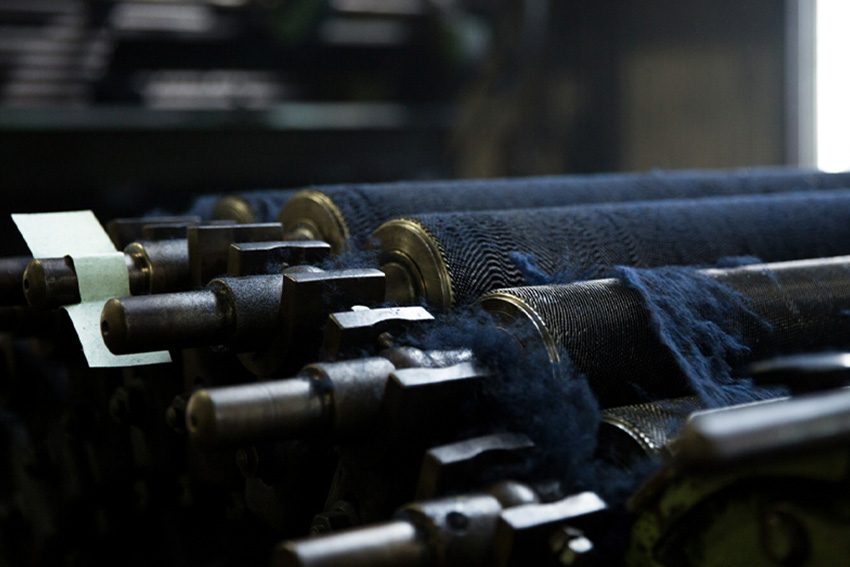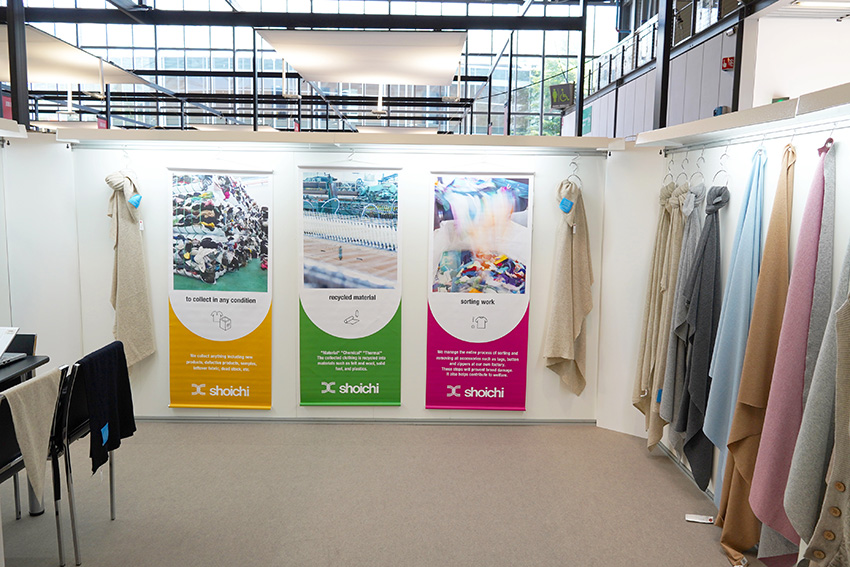A Japanese company that has enjoyed considerable success as a garment recycler in the domestic apparel market, Shoichi is out to become world No. 1 in the sector.

For some, 25 years may seem like a lifetime, but for Shoichi company President Shoichi Yamamoto, this is just the beginning.
Here he recalls how the firm, which specializes in corporate inventory disposal, came into being: “25 years ago, I learned that unsold clothes were being thrown away, and so the inspiration for founding Shoichi was to avoid wasting the products we made.”
With few new players entering the market, and existing firms beginning to shut down or pursue other avenues, Mr. Yamamoto is keen to emphasize his desire for Shoichi to survive into the next generation and beyond.
“To run an inventory business,” he says, “you need a warehouse. High-brand manufacturers do not want to waste inventory and are therefore looking for ways to reuse their products or rebrand them and sell them again. “This requires a certain amount of warehousing, not to mention human resources.”
To this end, Shoichi owns warehouses totaling 5,000 square meters in prefectures across Japan, and has the ability to process around 600 tons of recycling per year.
Mr. Yamamoto continues: “The reason we have been able to gain such a large share in the domestic market is that we are the only company with this kind of infrastructure in place. This makes us completely different from our competitors. We are the only company that has this kind of vision.”
Another source of pride is the company’s unique approach to recycling. “When I was volunteering in the past,” Mr. Yamamoto begins, “I would often hear how difficult it was for disabled people in Japan to find work opportunities. But there is no reason why people with disabilities can’t be reliable workers provided they are given proper training.”
As it turns out, his concern was shared by the powers-that-be: in recent years the Japanese government has begun to subsidize the employment of disabled people, providing a much-needed incentive for companies to change existing and out-moded hiring practices.
Mr. Yamamoto, for one, is adamant that the scheme, which forms part of the company’s sustainability initiative, has proved a success. “Not only do the subsidies help create jobs for the disabled community; they also reduce the financial burden of the recycling process, meaning we are more cost-competitive than other firms offering a similar service.”

Shoichi Stand at MILANO UNICA-2
The reason why this is important is immediately apparent. “Many of the requests we receive from luxury brands are for recycling,” Mr. Yamamoto confirms. “Sorting and scrapping clothes is very costly, however, and many recycling companies do not have the type of processes needed. When luxury brands try to find a recycling company, they usually choose one that will take all their clothing. But recycling companies may require brands to sort their garments or material before handing them over. Either way, it is very costly for the clothing manufacturer.”
With both reduced labor costs and the presence of a dedicated, highly trained workforce, Shoichi has a clear advantage in the field, which is no doubt one of the reasons it has a 90 percent completion rate when it comes to negotiating with luxury brands.
Another important factor here is the presence of technology used to recycle fibers such as wool and felt, thanks to techniques that are highly regarded in the industry.
Meanwhile, having recently showcased its recycled wool garments in the fashion capital of Milan, Shoichi is now in the process of launching its Martha brand, which employs the traditional method of Hanmou, whereby scraps are converted back into a raw fiber state, to make use of recycled fabric.
All of which dangles the enticing prospect of international expansion. Mr. Yamamoto confirms as much here: “We are trying to gain as large a market share as possible domestically before expanding into the global market.”
As for how the company can meet the demands of prospective fashion houses outside of Japan, let's just say there are exciting developments ahead. Mr. Yamamoto again: “We have already found a way to deliver materials and clothes from overseas to Japan using eco-friendly transportation that does not emit CO 2 . This doesn't only apply to luxury brands but also to fast fashion manufacturers who provide us with large lots. Recently we received an offer from one such manufacturer to select and scrap their remaining textiles in Japan.”
Nor is the company's spirit of innovation restricted to new and sustainable methods of transportation, with a recently established OEM arm providing a range of services from sample creation to mass production.
As a business that buys inventory from manufacturers, Shoichi is perhaps uniquely placed to understand the challenges that manufacturers face. But there are other reasons for starting an OEM business, as Mr. Yamamoto explains: “Because we were buying inventory from manufacturers and selling it, there were no trendy items in our inventory. But we want to make and sell trendy clothes. Over the past ten years,” he adds, “we have reduced the amount of waste from products we manufacture to zero.”
Looking to the future, the company is poised, as Mr. Yamamoto has become intimate elsewhere, to focus on the global market. “We want to repeat the same process that has proven so successful domestically here in Japan,” he confirms. “I don't expect to capture the entire global market share in my lifetime, but that is what the company is striving for.”
If that sounds like a note of caution entering your voice, don't be deceived. Mr. Yamamoto has a clear and ambitious plan in place as the company moves towards its 25th anniversary in business. “My goal,” he outlines, “is for Shoichi to become the world's number one new garment recycling company in the apparel industry. I want to be number one in terms of the volume of items processed. Our industry is small, we don't have a benchmark; “I want to reach 100 million garments by 2030. I believe we can do it.”
With a company known for its reliability, capacity and speed of delivery, to say nothing of its increasingly impressive contribution to society, it would take a brave man to bet against him.
0 COMMENTS